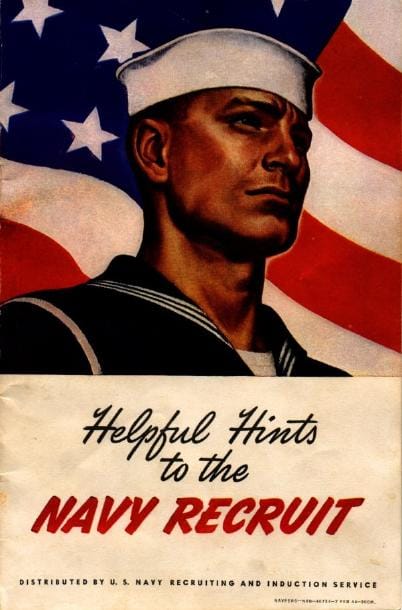My Father, as well as many other recruits for the USS Boston, was trained at the Naval Training Center at Sampson New York, on the edge of Lake Geneva. Other centers included the Naval Training Center in San Diego California, Great Lakes Illinois, Bainbridge Maryland, and Farragut Idaho.
Induction at
